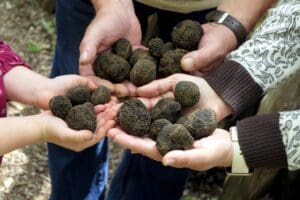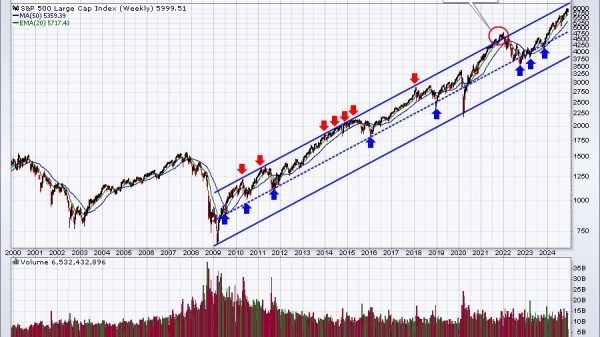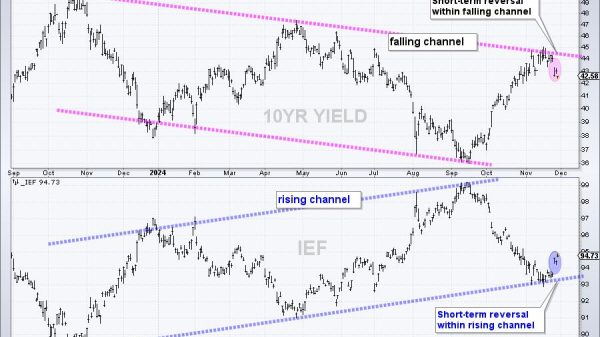GRIFFITH, Australia – Millions of vines are being destroyed in Australia and tens of millions more must be pulled up to rein in overproduction that has crushed grape prices and threatens the livelihoods of growers and wine makers.
Falling consumption of wine worldwide has hit Australia particularly hard as demand shrinks fastest for the cheaper reds that are its biggest product, and in China, the market it has relied on for growth until recent years.
The world’s fifth largest exporter of wine had more than two billion liters, or about two years’ worth of production, in storage in mid-2023, the most recent figures show, and some is spoiling as owners rush to dispose of it at any price.
“There’s only so long we can go on growing a crop and losing money on it,” said fourth-generation grower James Cremasco, as he watched clanking yellow excavators strip out rows of vines his grandfather planted near the southeastern town of Griffith.
About two-thirds of Australia’s wine grapes are grown in irrigated inland areas such as Griffith, its landscape shaped by vine-growing techniques brought by Italian migrants arriving around the 1950s.
As major wine makers such as Treasury Wines and Carlyle Group’s Accolade Wines refocus on more expensive bottles that are selling better, the areas around Griffith are struggling, with unpicked grapes shriveling on vines.
“It feels like an era is ending,” said Andrew Calabria, a third-generation vineyard owner and wine maker at Calabria Wines.
“It’s hard for growers to look out the back window and see a pile of dirt instead of vines that have been there as long as they’ve known.”
Nearby, the remains of 1.1 million vines that once comprised one of Australia’s largest vineyards were piled in heaps of gnarled and twisted wood as far as the eye could see.
Red wine has suffered the most. In regions like Griffith, prices of the grapes going into it fell to an average of A$304 ($200) a ton last year, the lowest in decades and down from A$659 in 2020, data from industry body Wine Australia show.
The government, which forecasts lower prices again this year, said it recognizes the significant challenges facing growers and is committed to supporting the sector, though many growers say it can do more.
Mr. Cremasco said some of his red grapes sold for little more than A$100 a ton.
To balance the market and lift prices, up to a quarter of the vines in areas such as Griffith must be pulled up, said Jeremy Cass, head of Riverina Winegrape Growers, a farmers’ group there.
That would destroy more than 20 million vines across 12,000 hectares (30,000 acres), Reuters calculations based on Wine Australia data show, or about 8% of Australia’s total area under vine.
Growers and winemakers in other regions have also been pulling out vines.
“If half the vines in Australia were ripped out, it still might not solve the oversupply,” said a wine maker in Western Australia.
Still, many growers unwilling to pull up vines are losing money while hoping for the market to turn around.
“It’s chewing up wealth,” said KPMG wine analyst Tim Mableson, who estimates that 20,000 hectares (49,000 acres) of vines need to be taken out nationwide.
GIVING IT AWAY
Health concerns are prompting consumers worldwide to drink less alcohol and when they do drink wine, they pick pricier bottles.
Chile, France and the United States are among the other large wine producers also grappling with oversupply, with even prime areas such as Bordeaux uprooting thousands of hectares of vines.
When China blocked imports during a political dispute in 2020, Australia lost its biggest wine export market by value. And unlike Europe, it offers farmers no financial aid to help them destroy vines and excess wine.
Even though China is expected to allow imports again this month, that will not mop up the glut, as demand there has fallen much more rapidly than elsewhere.
Wine sold for less than A$10 a liter – most of it made from grapes grown in areas like Griffith – accounted for two-thirds of the value of Australian wine exports worth A$1.9 billion in the year to December 2023, Wine Australia says.
Some areas are faring better, such as Tasmania and the Yarra Valley in Victoria, which produce more white wines and lighter, more expensive reds that are growing in popularity.
But across Griffith there are clusters of metal storage tanks, each holding thousands of liters.
“Everyone is trying to clear wine,” said Bill Calabria, Andrew’s father, adding that wineries were “all but giving it away” to make room for the incoming vintage.
Many growers are turning to citrus and nut trees instead.
Cremasco hopes for greater profits from the prune trees he is planting in his grubbed-up acreage, while GoFARM, a corporation, is putting in more than 600 hectares (1,500 acres) of almonds nearby, also replacing vines.
“There’ll be no next generation of family grape growers,” Cremasco added. “It’ll be all big corporates, and all the local young guys will be working for them.” – Reuters























